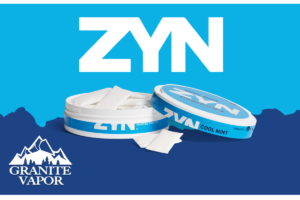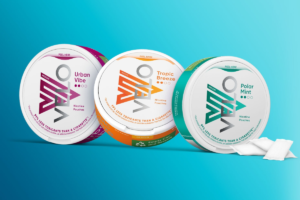Introduction
Lately, these have found increased demand in Europe as nicotine lovers sought an interesting and new way of getting their nicotine fix. This upsurge calls for a critical examination of the risks and side effects that may arise from these products. This article sets out on a journey towards the exploration and investigation of side effects of nicotine packets in Europe, thus shedding light on this important issue that needs attention.
Nicotine packets are also known as snus or nicotine pouches which have become part and parcel of daily life for many European smokers. They are popular because they can be used without being noticed by others, as they don’t produce smoke. Nevertheless, there have been concerns about safety issues and possible adverse consequences concerning any tobacco or nicotine product.
The convenience and potential harm reduction offered by nicotine packet is one explanation behind their popularity. Many users prefer this concept since it suggests an absence of any mess associated with conventional smoking while at the same time ensuring that nicotine is delivered to them in a smokeless manner privately within different settings. These pouches have been sold as safer alternatives to traditional cigarettes especially for a sizeable population of tobacco consumers.
In the course of our research into the side effects brought about by the use of nicotine packets, we need to understand why they are increasingly becoming popular in Europe; what makes them more attractive than other forms of tobacco; how do we address such safety issues? To fully analyze this problem means providing insights on both positive and negative aspects linked to it thereby enabling customers make better informed choices as far as using these items is concerned.

The Appeal of Nicotine Packets
For various reasons Nicotine pouches have managed to capture the attention of European smokers. They are loved for their invisibility, ease of application, and being perceived as less harmful than conventional cigarettes.
This is why many people find nicotine packets convenient as they don’t smoke anything. This means that users do not need to light them or use matchboxes and this simplifies the process of using them for nicotine delivery. Also, these packs are small in size and easily portable hence fitting perfectly into today’s style.
Moreover, marketing plays an important role in how they are valued. Nicotine packets are frequently sold as a tool for decreasing harm with emphasis on the possibility of cutting down smoking dangers. It is an appealing message to those who wish to try something safer yet related.
Dr. Emily Carter, one of the leading specialists in reducing tobacco-induced damages says: “Practicality and potential safety have made nicotine packets become popular among smokers; such attraction being attributable to convenience coupled with reduced risks as well as a tendency towards familiarization with oral forms of administering nicotine.”
Nicotine packets offer clients a clandestine and easy-to-use approach towards consuming nicotine. Many European smokers wanting a substitute to traditional cigarettes have found them attractive due to their ease and reduced risk perception. However, as we go deeper into discussing about how safe these products are, it is important we address some other considerations that lead to their popularity and his popularity has come about by people deciding on which brand they should purchase
Research on Nicotine Packets Side Effects
While there is a rising trend in the followers of nicotine packets, it is worth noting that many studies on their side effects are still at early stages. Little is known about the potential health risks associated with these products.
Traditionally, most research has centered on how nicotine affects the human body; however, very few studies have been conducted to evaluate side effects from using nicotine packets. Filling this gap in knowledge will enable consumers to make informed decisions regarding the benefits and dangers of using these substances.
Europe’s scenario tends to be more complicated since different countries have different specific regulations and preferences for markets. A full evaluation of side effects within a European context becomes necessary for its regulatory responses and public health interventions to be suitable.
If we are going to delve into investigating the side effects of nicotine packet, it is important to acknowledge that further extensive research should be conducted which can also be region-specific. It’s crucial to know the possible risks which may arise from their consumption as this will help customers in making informed decisions across Europe.
The in-depth study that focuses on individual adverse consequences of nicotine packet in European context will serve as an invaluable reference point for both consumers and policymakers. By addressing such knowledge gaps, we can get insights into what could put people’s health at risk or bring them benefit thereby aiding more informed choices and better regulation.
Impact on European Consumers
With the growing awareness about possible adverse effects of products, it is likely to influence choices and behaviours of European consumers. Policymakers and healthcare practitioners have to understand these influences in order to develop evidence-based strategies.
When concerns arise, regulatory responses take precedence among other considerations. Balancing the requirements of adult smokers for harm reduction options with the need to prevent youth initiation poses a major challenge.
Also, consumer perceptions and reactions towards information pertaining to side effects entails a great deal of importance. This will guide health promotion campaigns and educational efforts that should be made so that people can make informed decisions as regards nicotine pack.
Influence of safety concerns and side effects on consumer choice cannot be underestimated. Changes in behavior and attitudes must be monitored in order to ensure that regulatory responses are tailored to meet emerging challenges.
The focus of such deliberations must be on the well-being of European consumers, with the ultimate aim being striking a balance between harm reduction approaches and public health protection objectives.
The Future of Nicotine Packets in Europe
The delicate balance of the future direction of nicotine packs in Europe is achieved by a combination of regulatory changes harm reduction strategies and public health campaigns. Regulatory choices can shape the industry landscape while policy makers also need to weigh the gains of reducing harm against the need to safeguard public health.
Public health campaigns and education will be key in ensuring that customers are knowledgeable about the risks and benefits surrounding nicotine pack. Striking a balance between pleasure and risk is important, as consumers should have freedom to choose what they like based on their preferences and health objectives.
The prospects for regulatory developments regarding nicotine pack is unclear; how these products will continue to evolve in Europe or whether they will become more tightly controlled or guided by principles of harm reduction.
Health promotion campaigns will significantly enhance safety information dissemination: educating customers on potential side effects while emphasizing reduced harm compared with traditional cigarettes, which would be an intricate but crucial thing.
One thing is definite in this changing situation—the future of nicotine packet in Europe will depend on both regulatory measures, public health campaigns as well as consumer choices. Informed decision making must strike a balance between protecting from harms associated with smoking tobacco cigarettes versus allaying fears through disclosing essential facts concerning its use by European people.

FAQs: Common Questions About Nicotine Packets Side Effects
As the popularity of nicotine packets continues to rise among European smokers, it’s natural for people to have questions about these innovative products. In this section, we address some of the most common queries to provide a better understanding of nicotine packets’ side effects.
1. What are nicotine packet, and how do they work? Nicotine packets, also known as nicotine pouches or snus, are small, discreet pouches that contain nicotine and flavorings. Users place a pouch between their gum and upper lip, allowing the nicotine to be absorbed through the oral mucosa. Unlike traditional cigarettes, they are smokeless and do not involve combustion.
2. Are nicotine packets safer than traditional cigarettes? While nicotine packets are generally considered to be a less harmful alternative to smoking, they are not entirely risk-free. They do not produce harmful tar and many of the toxic substances found in cigarette smoke. However, nicotine itself can be addictive, and long-term use may have health consequences. It’s essential to consult with a healthcare professional and make an informed decision.
3. Are these products suitable for smokers looking to quit? Nicotine packet can be a potential tool for smokers seeking to reduce harm or quit smoking. Many users find them helpful in transitioning away from traditional cigarettes. However, quitting nicotine altogether remains the best option for long-term health benefits.
4. Are there age restrictions for purchasing nicotine packet? Age restrictions vary by country and region. In many European countries, these products are intended for adult smokers, and age verification measures are in place to prevent youth access. It is crucial to adhere to local laws and regulations.
5. Do nicotine packets come in different flavors and strengths? Yes, nicotine packets are available in a wide range of flavors, including mint, fruit, coffee, and traditional tobacco. They also come in various nicotine strengths, allowing users to choose the level that suits their preferences and needs.
6. How can I find nicotine packet in Europe? Nicotine packet are increasingly available in convenience stores, online retailers, and specialty vape shops throughout Europe. It’s essential to purchase from reputable sources and ensure compliance with local regulations.
7. Are there any ongoing studies on the safety and effectiveness of nicotine packets? Yes, researchers continue to study the safety and efficacy of nicotine packets. As these products are relatively new, ongoing research helps to provide more comprehensive insights into their impact on health and smoking cessation efforts.
8. What role do regulations play in the nicotine packet industry? Regulations govern various aspects of nicotine packet, including marketing, packaging, and age restrictions. These regulations aim to strike a balance between providing adult smokers with harm reduction options and protecting youth from potential risks.
9. Are there any support resources for those looking to quit using nicotine packet? Yes, many resources are available for individuals looking to quit using nicotine products, including nicotine packets. Support can include counseling services, smoking cessation programs, and healthcare professionals who can provide guidance and assistance.
10. What is the future of nicotine packet in Europe? The future of nicotine packets in Europe remains dynamic. Continued growth, innovation, and regulatory developments will shape the industry’s trajectory. As harm reduction and consumer preferences evolve, these products are likely to continue playing a significant role in the smoking landscape.
In summary, nicotine packet are an evolving and increasingly popular alternative for European smokers. While they offer potential benefits as a harm reduction tool, it’s essential for users to be well-informed about their use and for regulatory authorities to strike a balance between public health and adult access. As research and understanding of these products continue to develop, they will likely continue to impact the smoking habits of Europeans in the years to come.






